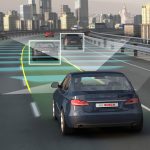 I wrote recently about some interesting new research exploring the ‘personality’ of driverless cars, and how riders are happier when the personality of their car matches their own. Whilst the finding sounds a peculiar one, it’s also been the topic of independent research from MIT CSAIL, which explored how AI could be used to gauge the personality of people on the road.
I wrote recently about some interesting new research exploring the ‘personality’ of driverless cars, and how riders are happier when the personality of their car matches their own. Whilst the finding sounds a peculiar one, it’s also been the topic of independent research from MIT CSAIL, which explored how AI could be used to gauge the personality of people on the road.
The paper aims to successfully classify whether a person’s driving behavior is selfish or selfless. It does so by utilizing Social Value Orientation (SVO) to place the degree to which someone exhibits selfish or cooperative behaviors, before then attempting to estimate the SVO of drivers in real-time.
When the algorithm was put to the test whilst observing drivers merging lanes or taking unprotected left turns, they were 25% more effective at predicting the behavior of other cars.
“Working with and around humans means figuring out their intentions to better understand their behavior,” the researchers say. “People’s tendencies to be collaborative or competitive often spills over into how they behave as drivers. In this paper we sought to understand if this was something we could actually quantify.”
Nuanced views
The authors believe that a central flaw in autonomous vehicle technology is that it tends to view humans as a homogeneous blob that acts in an identical manner. Of course, that’s seldom the case, and certainly not when we get behind the wheel.
“Creating more human-like behavior in autonomous vehicles (AVs) is fundamental for the safety of passengers and surrounding vehicles, since behaving in a predictable manner enables humans to understand and appropriately respond to the AV’s actions,” the researchers say.
The researchers combined game theory with social psychology to create a framework that allowed the vehicle to better conceive social situations. They then modeled a variety of road scenarios whereby the driver had to maximize not only their own utility but gauge the best responses of the other actors on the road.
This enabled the algorithm to predict the behavior of surrounding cars based upon a small snippet of motion, before then gauging the motion as cooperative, altruistic or egoistic.
These behaviors were judged as either prosocial, such as when others were allowed to merge into your lane, or egoistic when they didn’t allow others to do so. The system was then trained to better respond to the different behaviors it encountered, and especially to understand when even the most prosocial driver needs to be more assertive.
The researchers plan to further expand their research to other road users, such as pedestrians and cyclists, while also exploring the potential for their approach being deployed in other environments, such as the home or warehouse.
“By modeling driving personalities and incorporating the models mathematically using the SVO in the decision-making module of a robot car, this work opens the door to safer and more seamless road-sharing between human-driven and robot-driven cars,” they conclude.